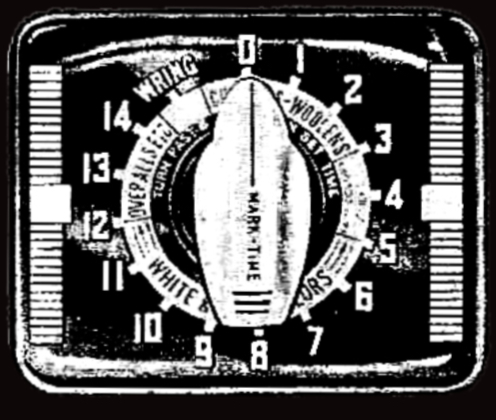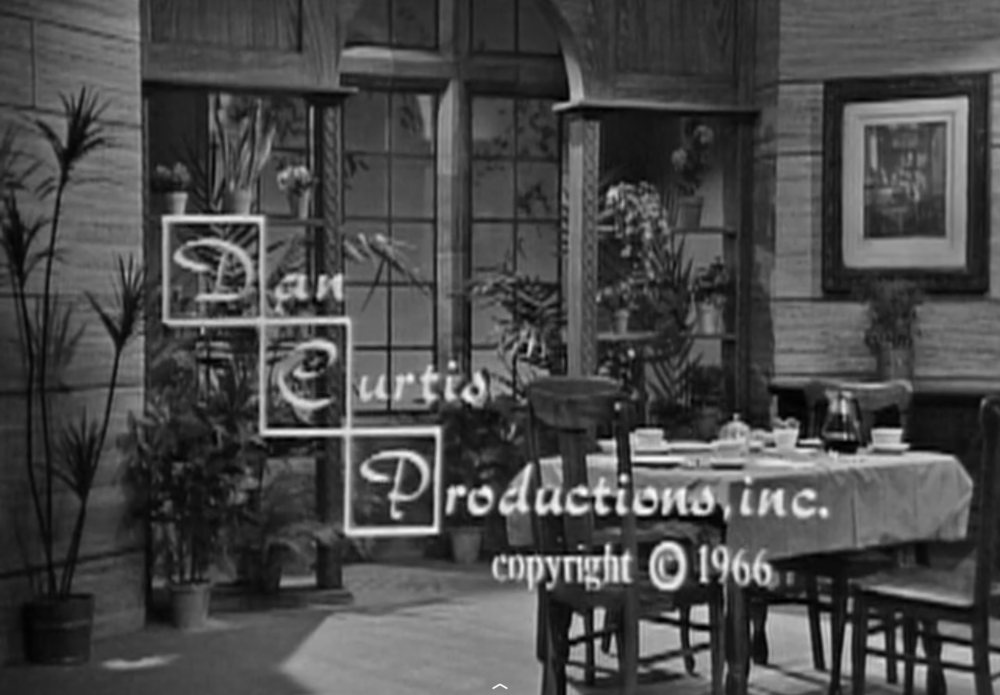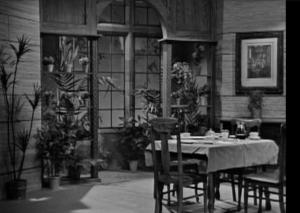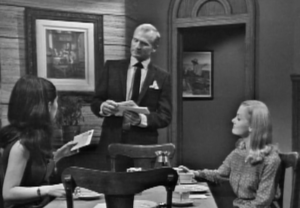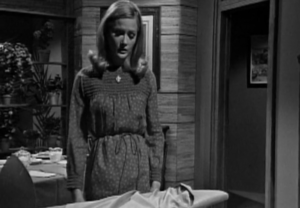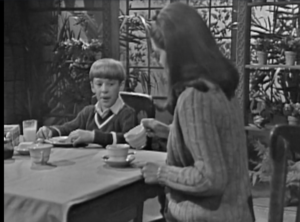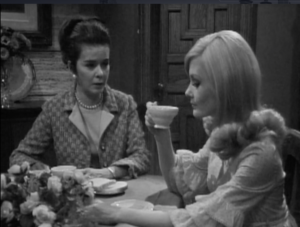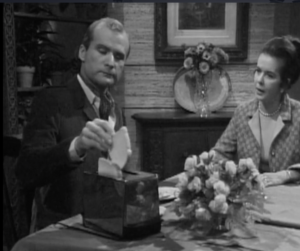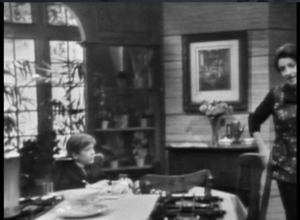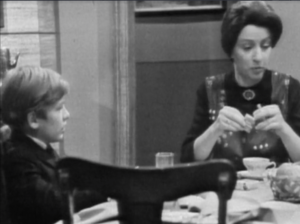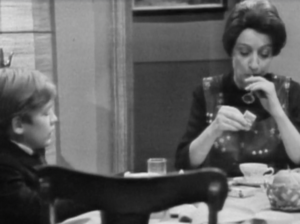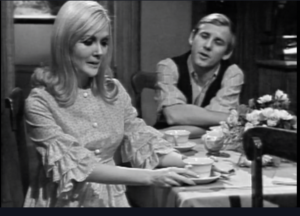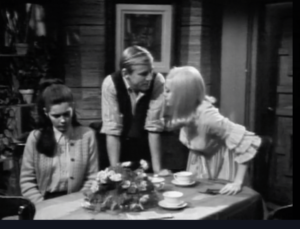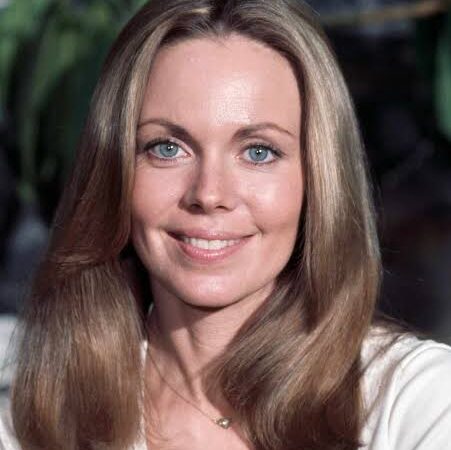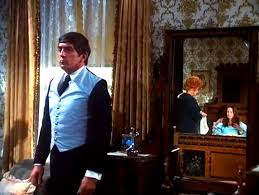I thoroughly enjoyed the 6-hour Facebook outage on Monday. I wrote two articles and changed out the summer bedding for upcoming colder nights. After folding bedding, laundering blankets, and bagging comforters for the dry cleaner, I sat down for a moment to a pinging phone and saw Facebook was back.
Crumbs!
After going through my notifications, I found an old post from 2 years ago had come back to haunt my feed. Someone on a forgotten Dark Shadows FB Group discovered the “breakfast nook of Collinwood” post. Yes, in the pre-Barnabas episodes 5, 16, 121, and 204, Victoria Winters and the Collins family can be seen gayly dining on a morning meal. I’m guessing this set was dust binned permanently in late April 1967. After the arrival of Barnabas, the entire Collins family was up all night, never slept again, and certainly didn’t eat breakfast anymore. Doing anything gayly only applied to certain principals.
It’s my turn to be a picayune Dark Shadows fan. I upset people with my other Dark Shadows post, so let’s upset people again. The fictitious breakfast space annoys me. It’s obviously a breakfast nook in the kitchen, which is so out of place it hurts. And the family calls it “the kitchen.” So lower class. A morning room should properly occupy the area. If one apes the betters, please establish the correct room type for the appropriate social class, even in a fictitious kitchen sink drama. Remember, if a wealthy New England family builds a 40-room manse with east and west wings, they do not dine at any time in a nook in the kitchen. Nooks are 20th-century inventions of the middle class. The housekeeper, Mrs. Johnson, would take her meals in a nook. The family of betters does not.
To provide a definition (because it’s a dull rainy day), a morning room is a small room built near the kitchen specifically for the morning meal. Before the 20th century, morning rooms were used by the lady of the manor as she prepared her day. To maximize available morning sunlight, the rooms faced east and thus placement inspired the name. It was a place casual reception of guests and used as a general family room from early morning to noon. Houses with attached kitchens became popular after the dawn of the 20th century. With modernization, the morning room function morphed into casual family dining. As family breakfasts increased, the space became associated with the meal and interchangeably called a breakfast room. The smaller dining area is used only one or two hours for the day’s most important meal. Near the kitchen, breakfast is served and cleared quickly. The room is then ready for other purposes or as a utility room for household duties by the staff.
In contrast, a breakfast nook is just that, a cozy corner of the kitchen. Breakfast nooks became popular in America in the 1920s. As the country’s wealth increased, smaller-scale amenities of the upper class trickled down to the middle classes. It became fashionable to place a table and bench in a sunny corner of the kitchen. A popular upper middle class design is an alcove between the kitchen and dining room. A bay window adds to the illusion of a separate space and provides a view. This style remains popular today.
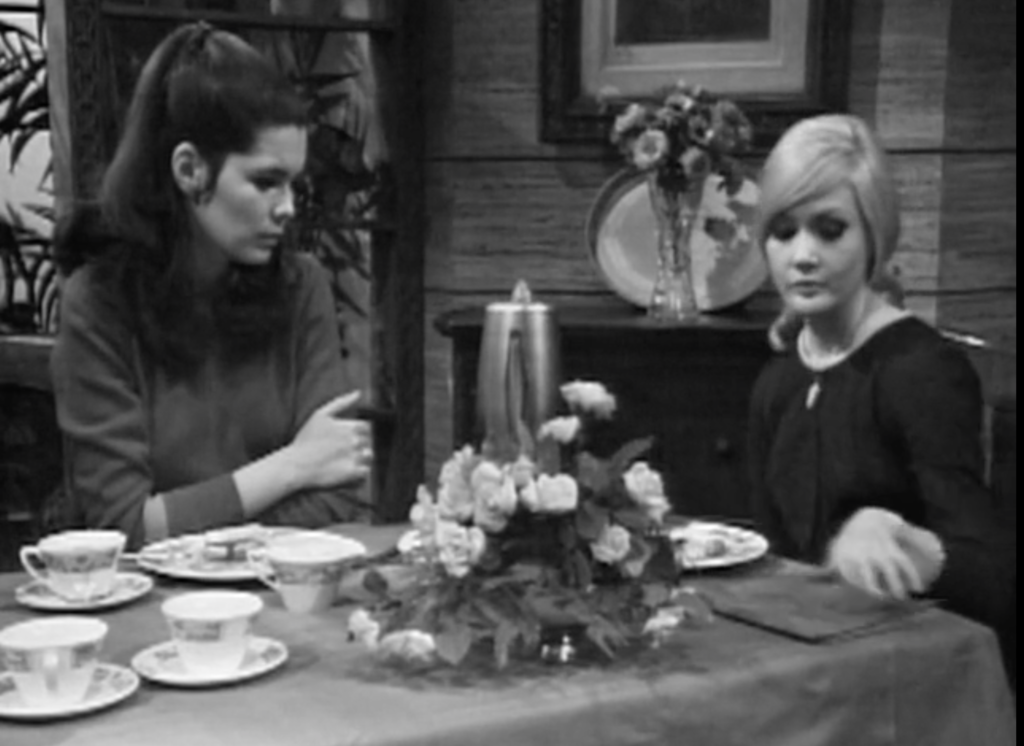
Looking at the stills from this scene in Episode 5, the breakfast space (I refuse to call it a nook) really looks like a morning room at first glance. The Collins family and Vickie are seated at a sumptuous midcentury dinette set with a matching sideboard. The alcove with the plants gives the appearance of a conservatory entrance. Sadly, they refer to the area as the kitchen. Carolyn ironed clothes in the breakfast space that episode, which is awful. Though physical labor is beneath her class, I will forgive her. There was no housekeeper at that point.
Isn’t it novel? Look how normal they all are during this era. We can almost hear the thoughts of the characters in these pictures. David is plotting to kill his father. Carolyn is going lalalalala. Vickie is wondering how many times she will scream and say, “I don’t understand!” before the day is done. Roger is being Roger – perhaps thinking of a filigree pen, how a toaster works, or his upcoming trip to Fire Island. Liz just wants to get the hell out of the house. The scenes are sunny and glad, and that’s just wrong – this is Dark Shadows, not As the World Turns. Dark Shadows is neither sunny nor glad.
Subsequent episodes reveal the area is indeed in the kitchen, as we can see in Episode 121 when Mrs. Johnson approaches the range. This scene is so disappointing. Dining in the kitchen is middle class to the point of being gauche. I expect this out of the nouveau riche, not a filthy rich old bloodline established in the colonial era. Shockingly, in a glaring act of social class vulgarity, Mrs. Johnson, the hired help, actually sits down at the table and lights up a smoke in the presence of young David Collins. The cheek! The nerve! I think I clutched my pearls and swooned at the impropriety.
I can forgive Mrs. Johnson for this breach of etiquette, though. She’s really the unsung heroine of the whole series. Mrs. J. survived every trope from the show’s beginning, though ghosts, vampires, Frankenbrat, werewolves, to Gerard’s haunting. Jim Storm’s scowl could bend steel nails out of plumb, yet Mrs. J. still did windows. She deserves her own nook.
The breakfast space makes one more appearance. In episode 204, we have one last glimpse of the sun and plants as Willie Loomis (James Hall) invades the place. Two episodes later, John Karlen takes over the role. In episode 210, Willie opens the coffin of Barnabas Collins, and we have a different show. The morning light and cheerfulness became pleasant memories.
The kitchen set showed up one more time in 1970. The breakfast area is no longer there. Jettisoned completely, a wall replaces the space. After that, the entire thing was sent back to props and never seen again. I’m guessing parts of the Collinwood kitchen made appearances on General Hospital or One Life to Live before being buried at the dump.
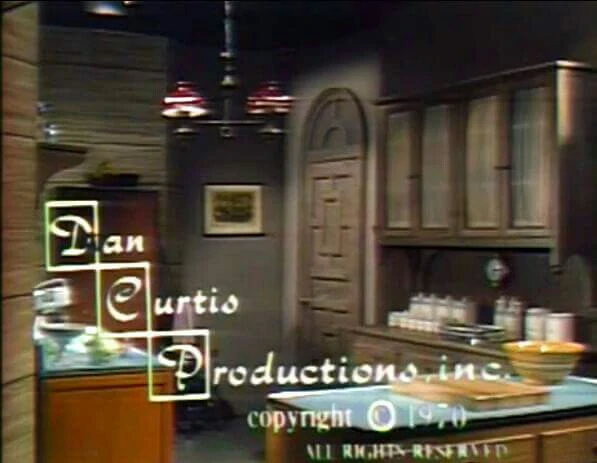
Browsing through Google, I found an old Worthpoint page. Up for auction was a photograph, from the 1950s, of the Seaview Terrace dining room. I’m guessing the set designer used this room for inspiration. The windows and door look very similar.
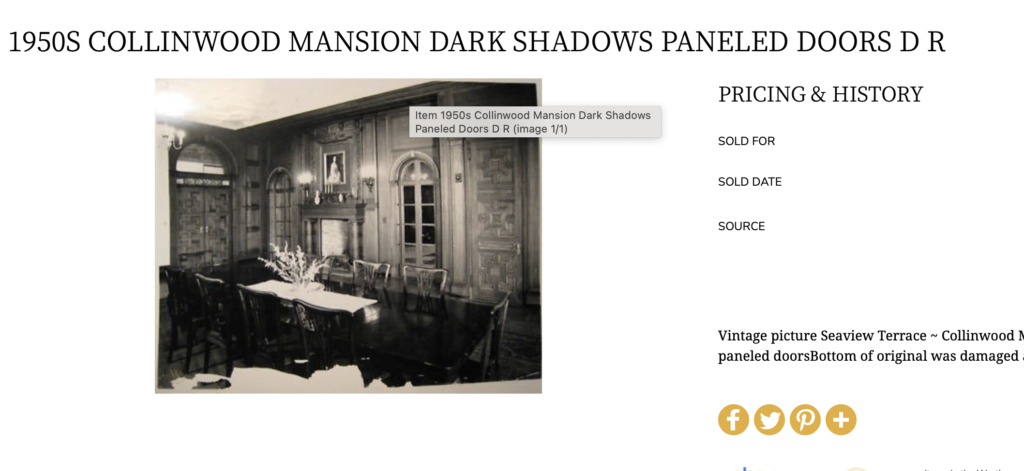
I’m always amazed at the attention to detail in the Dark Shadows sets. Fifty years on, it’s astonishing how production squeezed those intricate sets into one small stage in Hell’s Kitchen, NYC.
In closing, if I win the lottery tonight, I will purchase Seaview Terrace. Rest assured, I will avoid any faux pas, and I’ll use the morning room correctly.
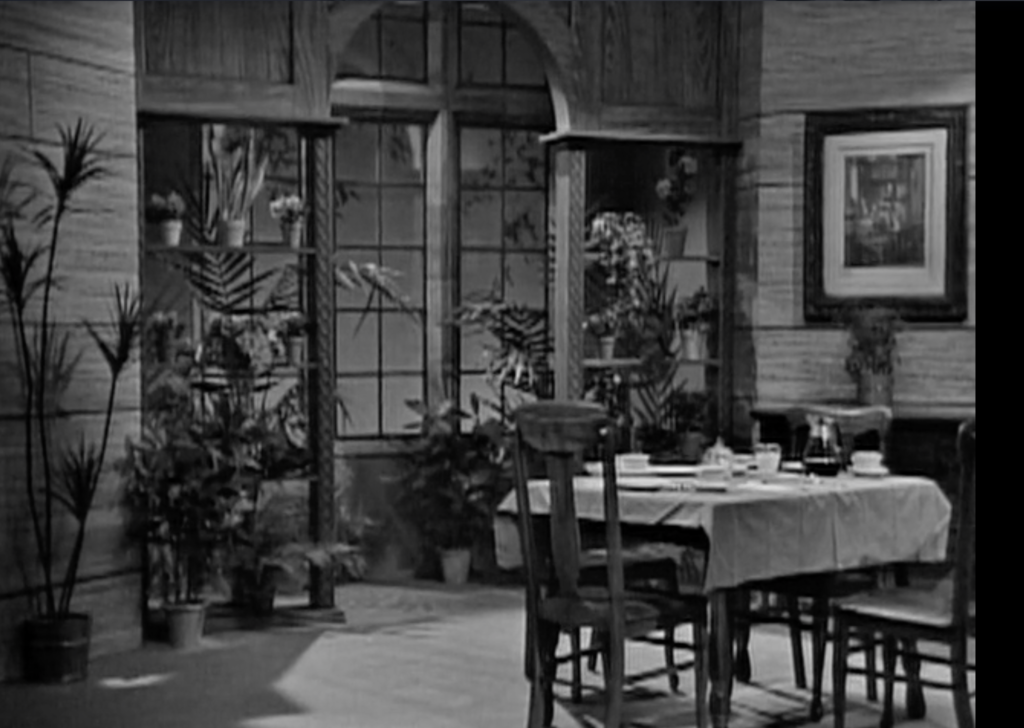
[If anyone has any other interior photos from Seaview in the 1950s, do shoot me a line admin@ this domain. – Ed]
The entire Dark Shadow series may be viewed on Tubi, IMDB Channel (via Amazon Prime), and select episodes on Pluto TV.
